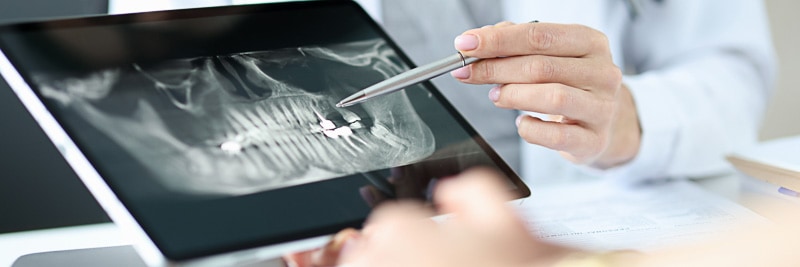Of the many technological advances in dentistry over the last few decades, the advent and adoption of digital x-rays may be the most significant. Digital x-rays have changed the way we practice dentistry because they allow us to provide dental care more efficiently and with reduced exposure times.

Speed of care
While it still takes the same amount of time to prepare a crown or fabricate a temporary crown, the use of digital x-rays, however, does reduce the overall time our patients have to spend in the chair. In the past we had to wait 3-5 minutes for an x-ray to be processed, while with digital x-rays, the image appears instantly for us to read and evaluate. And in a procedure where multiple films may be needed such as with a root canal or an extraction, the time can add up.
Safety
We understand that the thought of taking x-rays can provoke anxiety. Fortunately, digital x-rays reduce radiation risk significantly because the exposure time is much lower compared to traditional films. And even with digital x-ray technology, we still try to minimize the number of x-rays that we take, and we only take films when necessary. It’s also important to note that some people require more x-rays than other people because some people have a higher cavity rate, a dry mouth, or a history of significant dental treatment in the past with multiple crowns and other restorations.